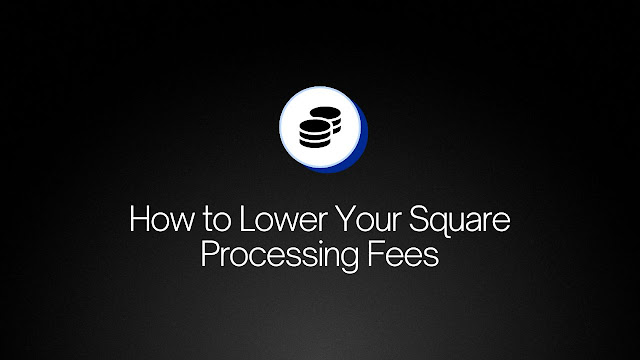How to Lower Your Square Processing Fees
Discover smart strategies to lower your Square processing fee. Learn how to reduce Square transaction fees, optimize your payment setup, and save
If you're a small business owner using Square to accept credit card payments, you already know the convenience it offers. But with that convenience comes transaction fees that can quickly add up. Whether you’re dealing with Square credit card processing rates or monthly service fees, understanding how to lower your Square processing fee can help protect your bottom line. In this article, we'll cover practical and effective strategies to reduce Square payment fees and make your payment processing more cost-efficient.
Understand How Square Processing Fees Work
Before you lower your Square fees, you need to understand what you're paying for. Square typically charges a 2.6% + 10¢ fee for in-person transactions, and 2.9% + 30¢ for online payments. These are flat rates, meaning they don’t fluctuate based on card type. However, fees may vary depending on whether it's a swipe, dip, or key-in transaction.
These Square payment processing fees are charged per transaction and can eat into your profits if not managed correctly.
Choose the Right Payment Method
Not all payment types are created equal. Manually keyed-in transactions often have higher Square processing rates (3.5% + 15¢), while swiped or dipped cards are charged at a lower rate. Encouraging customers to tap or dip their cards instead of manually entering numbers can help reduce Square transaction fees over time.
Use Square Reader or Square Terminal for In-Person Payments
Investing in hardware like the Square Reader or Square Terminal can streamline your payment process and save money. Using proper Square hardware ensures you're using the lowest applicable rate for in-person card payments, as opposed to manually typing in card details, which triggers higher fees.
Negotiate Custom Rates If You're a High-Volume Seller
If your business processes more than $250,000 annually in card sales with an average ticket size of $15 or more, Square may offer custom pricing. This is a little-known way to lower Square payment processing fees that many sellers miss out on. Reach out to Square's sales team to discuss potential savings based on your volume and transaction type.
Incentivize Customers to Pay with Cash or ACH
Offering discounts for cash payments can shift some customers away from credit card transactions. Fewer card transactions mean fewer Square transaction fees. For high-ticket items or services, you might even consider accepting ACH bank transfers, which typically have lower fees than credit cards.
Use Square Invoices and Online Checkout Strategically
If you must accept payments online, consider optimizing how you use Square's tools. Square Invoices, for example, allow customers to pay using ACH (bank transfer), which comes with a lower processing fee of just 1%. This method is ideal for service-based businesses, freelancers, and consultants.
Track and Review Your Payment Analytics
Use the Square Dashboard to track where your money goes. This helps identify which payment methods cost you more in fees. Monitoring these metrics will help you create a data-backed strategy to reduce Square payment fees by modifying transaction methods or adjusting your sales process.
Use a Surcharge Program (Where Legal)
In some states, it's legal to pass on the processing fee to the customer as a surcharge. While this should be handled carefully and disclosed clearly to avoid customer dissatisfaction, it’s a legitimate way to cover Square merchant fees. Make sure to check local laws and regulations before implementing this approach.
Consolidate Transactions When Possible
Instead of charging customers in multiple smaller transactions, try consolidating items into one total payment. Since Square charges a per-transaction flat fee, reducing the number of individual transactions can slightly reduce your overall fee percentage on smaller purchases.
Explore Other Square Alternatives for Specific Transactions
While Square is great for POS systems and card-present payments, there are times when using another platform may offer a lower processing fee. For instance, PayPal, Stripe, or Venmo for Business might offer better rates for specific online transactions or services. However, be sure to weigh the convenience and integration factors before switching.
Conclusion: Take Control of Your Square Fees and Maximize Profits
Managing Square fees isn’t about eliminating them—it’s about optimizing your payment structure to ensure you’re not overpaying. By leveraging in-person payments, switching to ACH transfers, encouraging cash payments, and negotiating custom rates, you can lower your Square processing fee and keep more of your hard-earned money. Stay proactive, and regularly review your fee breakdowns to ensure your payment strategy remains cost-effective.


